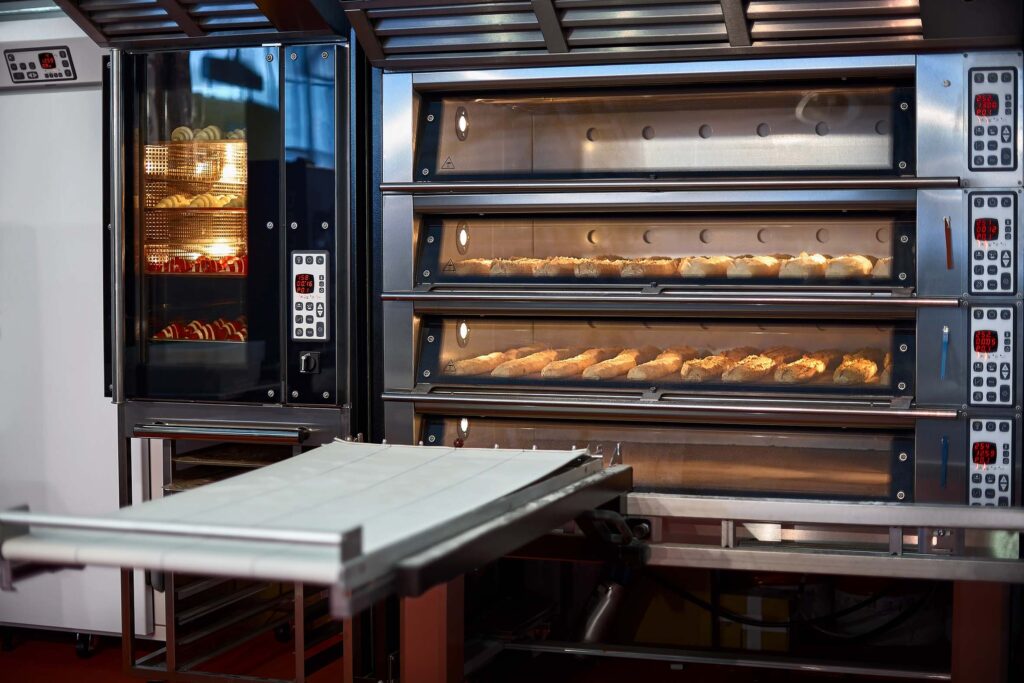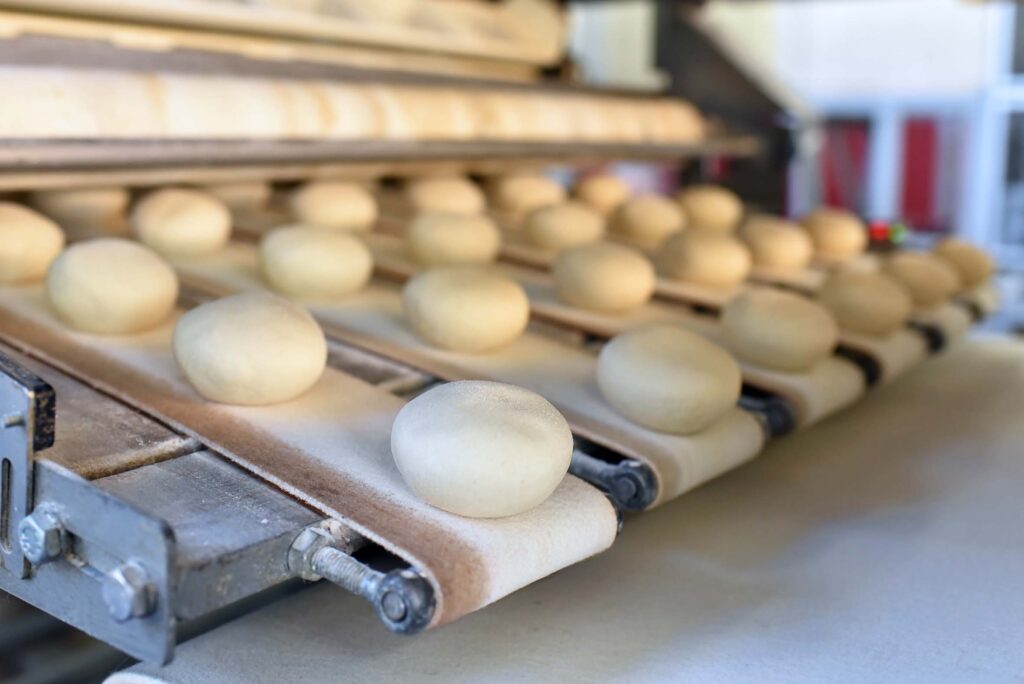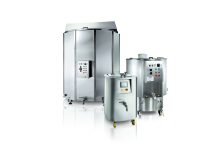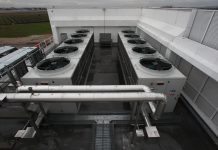
Processes and machinery make it possible to obtain industrial products that are increasingly similar to hand-made products. The greatest innovations are on the ovens to obtain breads with a crispy crust and a soft and fragrant interior.
Bakery is increasingly becoming a precision technology and enables industrial products to be obtained that are similar in quality to artisanal products. Bakeries and industry can opt for complete bakery lines of for individual machines to be installed ad hoc in the different stages of production. Industrial bread is no longer synonymous with low quality.
Modern machines are able to process the bread starter prepared with natural yeast to give the final product characteristics such as the crunchy crust and the soft and fragrant interior. To meet the needs of consumers who are increasingly attentive to the products they buym the bread industry is moving towards longer production processes, where it is not only the ingredients that count, but also the production process.
The resting and leavening times are lengthened, the processing is made at lower temperatures with a higher percentage of water than in the past, with the intention of making the industrial product more and more similar to the artisan one.
Machines for all needs
With regard to technological choices, in the industrial production of bakery products, more and more companies prefer complete, flexible and customizable solutions, able to adapt to different production needs, to produce a wide range of products including bread, pizza and cakes of various kinds.
More and more efficient machines allow to produce a wide range of bakery products, thanks to modular structures, which can be adapted in order to process different types of recipes, such as oil or milk bread, round country bread, Sfilatini bread, as classic baguettes, artisanal bread for sandwiches or country baguettes, bread loaves, focaccia, ciabatta, French bread, etc., with or without gluten. Different recipes correspond to different types of dough: with mother yeast, bread starter, pre-fermented dough, highly hydrated, low-salt, with organic ingredients or gluten-free.
Versatility seems to be the key element of modern bakery lines that companies have available, including low-stress processing that ensures stress-free dough. If there are not so many products to be made or if there is no space problem, companies can choose specific production lines, which process doughs with a high percentage of water, such as those for the ciabatta bread, with a flat and elongated shape, with the internal crumb soft and alveolar, while the external crust remains golden and crispy.
The production capacities of the lines are modular and the number of loaves depends on the size. Similarly, on the market there are production lines for round breads, processed with different types of dough: from rustic moulded bread to bread with mixed seeds and round bread with a hole, like bagels, to soft sandwiches and burgers. In this case, the line includes a rounding machine whose task consists in transforming square dough portions into rounded loaves.
Typically, automatic bread-making lines are capable of producing a rich assortment of bread types and processing numerous types of dough. In addition, the complete customization of the lines makes the systems suitable for every production need. Some bread-making lines are based on low-stress rolling systems that receive the dough from the mixer, divide it into strips and, with a conveyor belt, bring it to the cutting station, where a guillotine reduces it into smaller portions, according to the desired size.
At that point, the broken-up dough is then transported to a moulding machine that turns the pieces into the required shapes. Finally, depending on the configuration chosen, the line can be connected to a conveyor belt directed to the freezers or to a tray depositor to be sent to the ovens.
In any case, all the steps of modern bakery lines are automated and adjustable, and can be modified according to the recipes. The hygienic design optimizes the degree of sanitation.

Ovens
In bakeries, ovens with superimposed chambers and/or those with rotating trolleys are a must. Rotary ovens are characterized by vertical baking chambers with trolleys hosting the baking trays with the bread to be baked. The flavour of the products is less intense, but the baking is more homogeneous compared to that given by the ovens with superimposed chambers.
These, on the other hand, are characterized by a variable number of overlapping horizontal chambers and therefore have the flexibility required for a modern bakery. This type of oven allows for fairly rapid baking, the bread has an intense colour, especially on the top, and a better taste and fragrance than those provided by rotary ovens. Cooking, however, is not always homogeneous. Both allow to quickly handle large quantities of bread.
The choice of the oven is based on the intended type of baking, and more often electric ovens rather than fuel oil ovens are chosen, because in the former the heat spreads more uniformly and guarantees a better cooking quality. These ovens also allow to select the type of heat distribution, from the top, the bottom or both sides. In addition, it is possible to toggle the heating element in order to initially select a cooking on both sides and then change to selection to prevent surface overcooking.
Electric ovens are very efficient and less energy-consuming. Many of them are thermally insulated to prevent heat loss with greater energy savings. In addition, they are equipped with a ventilation system to facilitate a homogeneous heat distribution. Modern baking technologies prevent that weather conditions affect the final result of the baked product. Cooking is uniform regardless of air pressure, in summer or winter. The bakery and pastry products are more homogeneous and of a consistent quality.
This is because the pressure and the amount of re-circulated air in the ovens can be adjusted. This results in better volumes, a crumbly crust and minor and controlled surface dehydration. Especially in rotary ovens, where heat is transferred to the product to be baked by convection, it is essential that the temperature difference between the recirculation air and the product to be baked and the quantity/speed of the air are mutually conditioned to ensure the optimum combination of heat and amount of air for every baking product at every cooking stage.
To do this, the ovens can be equipped with frequency converters or adjustable openings, located between the cooking unit and the heating unit. In this way, less steam is generated with the same amount of water, or vice versa, less water is used to obtain the same amount of steam and thus less energy. In some ovens, the vaporization process has been improved by simply spraying water with compressed air. The fine mist is more evenly distributed and evaporates faster and more completely, making saturated steam available immediately. The products will have a better crust and shine. In addition, there is a saving of water and therefore of energy needed for evaporation.
Many ovens can be programmed in advance so that they are ready to work at the beginning of the shift, with considerable savings in terms of time. Steps forward in energy saving also in cleaning operations, since the latter can be temporarily combined with the heating of the oven itself, so that the residual heat of the cleaning process can be used to heat the cooking process. Traditional oven cooking systems allow two burner modes: on or off. Other ovens work with two different energy intensities to more precisely regulate the temperature curve in the cooking unit, saving amounts of energy because the oven, if not needed, does not have to work at maximum burner power.

Instead of keeping the oven at a constant temperature consuming energy unnecessarily, it is possible to bring the temperature of the baking chamber to a low value, either immediately after the end of the baking process or after a period of non-use, and to set the time when it should be running at the desired power. The European project LEO (Low Energy Ovens) has also worked on energy saving. The infra-red technology installed on ovens reduces the energy required during the cooking process by 20-40%, and saves up to 70% of the time.
The main objectives of the project concerned the construction of prototype ovens and the assessment of their marketability. The final results indicate that infra-red technology has strong market potential. Smart automated technology has also made its way into baking processes. In fact, it is possible that automatic mechanisms regulate temperature variations in the cooking chamber, perhaps because it has been opened or because a smaller quantity of dough or a warmer dough has been introduced, limiting these process variations in an automatic, smart and flexible manner.
The system stores the recorded temperature curve and adjusts the temperature of the cooking chamber, always following this ideal curve. Several temperature curves can be set depending on the product to be cooked. Frozen leavened doughs can be cooked as soon as they have been removed from the freezer, without further leavening, by combining the controlled thawing of the dough in the baking chamber directly with the next cooking process, thanks to programmes specifically designed for the cooking of frozen leavened doughs. Defrosting takes place at a core temperature of approx. 0 °C, and continuous steaming and air circulation impulses ensure that the outside does not dry out excessively, and then the relevant cooking program is started.
Refrigeration for bakeries
Refrigeration in bakeries is important and requires customized solutions for both temperature and humidity. Bakery firms can avail themselves of a system that arranges the dough on racks, where – using a suction chiller – they are cooled quickly and evenly, but without freezing, and then are gently cooled to a core temperature of 6°C.
A ventilation system prevents dehydration. Cold storage in a (positive) low temperature range contributes to the complete formation of aromatic substances. Racks act as cold accumulators, and thus simplify transport, storage and logistics. Cooled doughs can be transported and baked without active cooling, within a maximum of 36 hours.
Connected Systems
More and more systems are connected to an intelligent network in line with Industry 4.0 to monitor the entire production process, improve it by making available all information for and from plants centrally and in real time, for complete monitoring and reliable reporting. Data processing allows for predictive measures that optimize over time.



